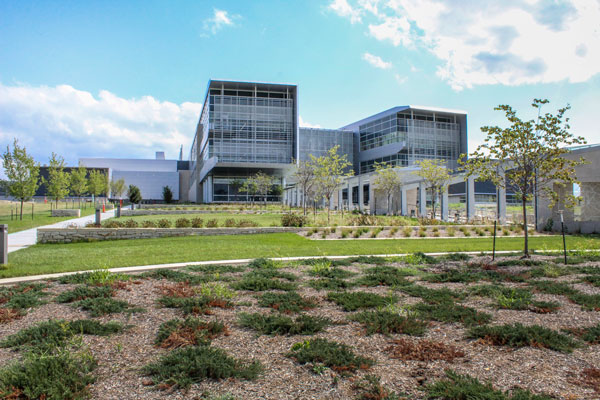By Katie Pawlosky, NBAF Communications Director
December 2021
The U.S. Department of Agriculture’s National Bio and Agro-Defense Facility, or NBAF, is making new year’s resolutions this December to last a lifetime. One of those is developing NBAF’s culture.
NBAF Director Dr. Alfonso Clavijo speaks about culture a lot when he addresses NBAF staff. He and all NBAF leaders are working to develop an all-encompassing One NBAF culture rooted in safety, security and quality.
Being “One NBAF” may not resonate with many outside USDA, but it’s an important concept for us. We have two different USDA agencies at NBAF — the Agricultural Research Service, or ARS, and the Animal and Plant Health Inspection Service, or APHIS. These agencies must work hand in hand to protect the U.S. against emerging, foreign and zoonotic diseases in large livestock. As a reminder, zoonotic diseases are those that are typically found in animals but can affect humans.
The ARS employees will do a lot of NBAF’s research to understand these diseases and develop countermeasures for them. They are also responsible for NBAF’s operational functions like biosafety, security, communications, and operations and maintenance for the entire campus. The APHIS employees at NBAF will be involved in prevention, surveillance, diagnosis and response to these diseases, including the expertise to manage the nation’s two vaccine banks. In addition, APHIS personnel will manage critical functions such as safety, training and IT as well as laboratory support functions like laundry and transshipping.
“ARS and APHIS have different mandates but they’re very complementary,” Dr. Clavijo said. “We need the expertise that both agencies bring to the table to create a rounded approach to defending our livestock, agricultural economy and public health from these high-consequence animal diseases. NBAF is in a unique position to do diagnostics and training, as well as research and veterinary countermeasure development for emerging and zoonotic diseases in large livestock.”
It takes everyone’s participation and exceptional communication to stand up a facility that can handle those unknown diseases. This One NBAF approach is bringing the team together even though we’ve mostly been apart throughout the pandemic.
USDA has onboarded more than 170 new employees since we started teleworking in March 2020. That’s about 70 percent of our current workforce — many who have never met each other in person. But despite having a computer between them, teams have unified and friendships still have developed between coworkers. We regularly host virtual all-hands and unit leads meetings, team-building trainings, committee meetings and a few optional social events and seminars over lunch hours.
“We have had our challenges and our successes, but we always will support the staff working at NBAF,” Dr. Clavijo said.
Our next year holds the promise of being able to transition into a newly constructed state-of-the-art facility and finally getting to work alongside one another, which hopefully will create cemented relationships as solid as the actual walls of the facility.

